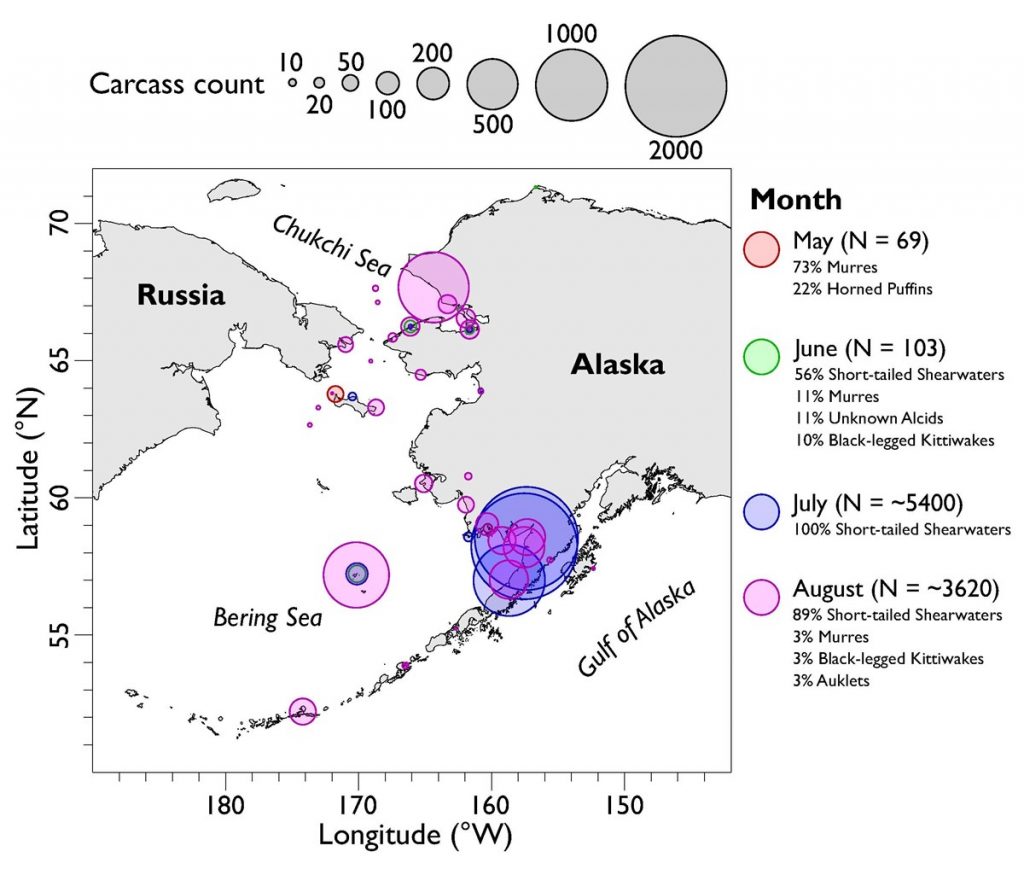Animals are indicators of the ecosystem’s health. They are red flags that we have to pay attention to. There are many signs that the Alaskan ecosystem is slowly but surely collapsing. The latest example is the desastrous number of cods that prompted Alaskan officials to close its fishery in the Gulf in 2020.
Now, for the fifth year in a row, thousands of seabirds washed dead ashore, but scientists only blame ‘climate change’ as a cause and never propose Fukushima radiation as one of the possible origin of the die-offs.
Some bird die-offs occur naturally once in a while. However what’s currently happening in Alaska is too massive with every year, at least a large bird kill. Seabirds are indicators of the ecosystem’s functions, if not ecosystem health. These are red flags that we have to pay attention to.
According to Arctic Today, the mass die-offs occur at different places and different seasons of the year for different species. Bus according to the same scientists the dead or dying birds are emaciated, and the die-offs correlate with a heat-up of the marine environment. Something like the Blob, maybe?
The latest victims are at least 9,200 short-tailed shearwaters, that started to show up on shorelines beginning of May 2019 in and north of the Bering Strait as well as in the Bristol Bay region of southwestern Alaska as described by the U.S. Fish and Wildlife Service and the National Park Service.
Some dead shearwaters were also found along Russia’s Chukotka Peninsula. Moreover, massive shearwater gatherings were reported last month in parts of the Gulf of Alaska – near Kenai Fjords and Glacier Bay National Parks as well as in the Kodiak region – which is not their usual summer and fall habitat.
But this is only the tip of the iceberg as most of the dead birds either sank or died in places where they were never seen by people.

No comments:
Post a Comment